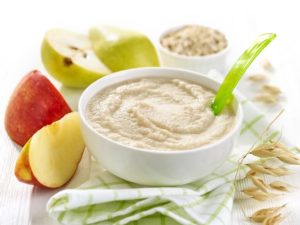During the breastfeeding period, mother and child enjoy contented moments and intimate togetherness. At some point, however, this phase inevitably comes to an end and it is time to stop breastfeeding. There can be various reasons for this farewell to breastfeeding. However, most mothers are then faced with the question of how best to go about this.
Table of contents
The Right Time
There are a number of controversial opinions on the subject of “Breastfeeding – how and when? Every mother wants to wean her child from the breast as uncomplicatedly as possible and thus make the transition to complementary feeding possible”.
According to the breastfeeding recommendation of the World Health Information (WHO), mothers should breastfeed their children fully for six months. This is followed by slow acclimatization to individual formula meals.
The ideal time for weaning should be determined individually. In doing so, you should also be guided by the needs of your child.
Weaning – How Exactly?
This is a frequently asked question to which there is no general answer. It is an individual matter.
If you want to wean, you should therefore pay close attention to your child’s signals. When your child shows a clear interest in the meals of the “big ones”, it may be time for the complementary feeding phase.
However, if possible, you should not start feeding before the fourth month of life. It is best to stop breastfeeding according to your feelings and not according to the rules of a guidebook.
WHO Recommendation
The WHO recommendations are not a fixed dogma – there are numerous reasons to deal with the questions “Weaning – how and when?”, “How to wean properly?”, “Gentle or fast weaning?” and “How can I wean?” at an earlier stage. If it’s too early to feed, you can pump breast milk with a breast pump and gently introduce your baby to bottle feeding.
The combination of breastfeeding and formula feeding does not necessarily mean the end of breastfeeding. According to the WHO, breastfeeding is absolutely recommended until the end of the second year of life, so breastfeeding and supplementary feeding are also possible for a longer period. Weaning properly is always a question of respecting the individual needs of mother and child.
Weaning Correctly – Gentle Weaning – When To Wean
Natural weaning corresponds to slow weaning, in which the child wants to drink at the breastless and less of its own accord. Proper weaning is therefore for many convinced supporters exclusively the natural weaning method. With this gradual weaning over a longer period of time, there is usually no danger of the dreaded milk stasis. After the introduction of complementary foods, breastfeeding is continued, but solid foods gradually replace the individual breastfeeding meals. If you wean naturally, however, the child decides when he or she no longer wants breast milk. Breastfeeding and feeding in this method are thus determined solely by the child’s needs. This gradual transition can last several months, so this weaning, as can often be read, is not possible for every mother. If you want to wean naturally, you should not be tempted to do so more quickly by outside people under any circumstances.
Weaning Naturally Without Milk Stasis – How To Wean Best
Natural weaning is always based on the needs of the child because, with this method, the child decides for itself when the time has come for the final weaning. When you wean naturally, milk production automatically reduces due to slowly decreasing demand. Breastfeeding and supplementary feeding are practiced over a longer period of time, often even into the child’s second year. With this type of weaning, the dreaded milk stagnation rarely occurs, but you should also avoid any stress as much as possible with this method.
Weaning Correctly – When To Wean
Don’t be put off by outsiders if your child has not weaned itself even at the age of two. If you want to wean naturally, you and the child should be in the foreground. Under no circumstances should you take wry looks or supposedly good advice as an opportunity to speed up weaning. The feel-good factor between you and your child plays a decisive role if you want to wean naturally. With this method, your child alone decides when the right time to wean has come.
Gentle Weaning Or Fast Weaning?
When asked “How do I wean?” most women opt for gentle weaning. Gentle weaning is a very common method of weaning. Gentle weaning is always the better alternative, as it allows the baby to gradually get used to the new food supply. If you want to wean properly and prefer gentle weaning, you should therefore always be guided by your child’s signals. If your child is going through a rather difficult phase and is increasingly looking for maternal closeness, it is better to delay the time for final weaning a little longer. Natural or gentle weaning also offers a good opportunity for the child’s digestion to slowly adapt to the new food and is, therefore, a good choice if you want to wean properly. However, gentle weaning, unlike natural weaning, is determined by the mother.
When Gentle Weaning Is Not Possible
Gentle weaning is not always possible and under certain circumstances, only fast weaning remains as an alternative. Unlike slow weaning, this is less advisable for both mother and child.
Sometimes, however, there is no other way. Often there are health problems that make rapid weaning necessary. However, this is a great burden for the child. Therefore, spoil it with sufficient cuddling units. This will ease the transition and give the child the closeness it needs.
Rapid Weaning – Preventing Milk Retention
In the event of health problems, rapid weaning may be necessary. Weaning – how can you proceed in this case? Often, as already mentioned, this weaning is not without problems, because in addition to the unfamiliar situation for the child, unpleasant side effects can also occur for the mother. Gentle weaning is not always possible. For example, if there is frequent milk retention and repeated unpleasant breast infections, abrupt weaning may be necessary as mentioned above. Usually, with this rapid weaning, the mother asks herself “How can I wean without harming my child?” or “How can I wean and prevent milk engorgement?” and faces many problems.
When To Wean – Means For Weaning
When weaning is really necessary within a few days is always at the discretion of the attending physician. Weaning remedies can artificially reduce the production of the hormone prolactin and thus make weaning somewhat easier. Milk production is significantly reduced by the reduced breastfeeding hormone. If you have already been treated several times for milk retention and breast inflammation and now want to wean quickly, your doctor may prescribe prolactin secretion inhibitors in this case. These hormonal drugs reduce milk production and thus reduce the risk for milk engorgement due to rapid weaning.
What Is A Milk Stasis?
The name already explains it – in most cases, there is relatively short-term congestion of milk in the breast. This is usually manifested by pain and sensitivity to pressure.
Redness of the breast, fever, and firmer spots in the breast also often occur with milk engorgement.
Breastfeeding and expressing milk from the breast is usually very helpful and serves to relieve breast pressure when milk engorgement occurs. Rapid weaning can often lead to milk engorgement, so the breast pump is a good alternative. However, do not pump too much milk. After all, you want your breasts to get used to not making new milk all the time.
Conclusion
“How do I breastfeed?” and “When is the right moment?”- these are questions that many breastfeeding mothers deal with sooner or later.
Every mother should deal with this topic individually. Despite the breastfeeding recommendations of the WHO, there is no absolutely right way to wean.
How you approach this task depends first and foremost on you, your child, and your respective life circumstances.












